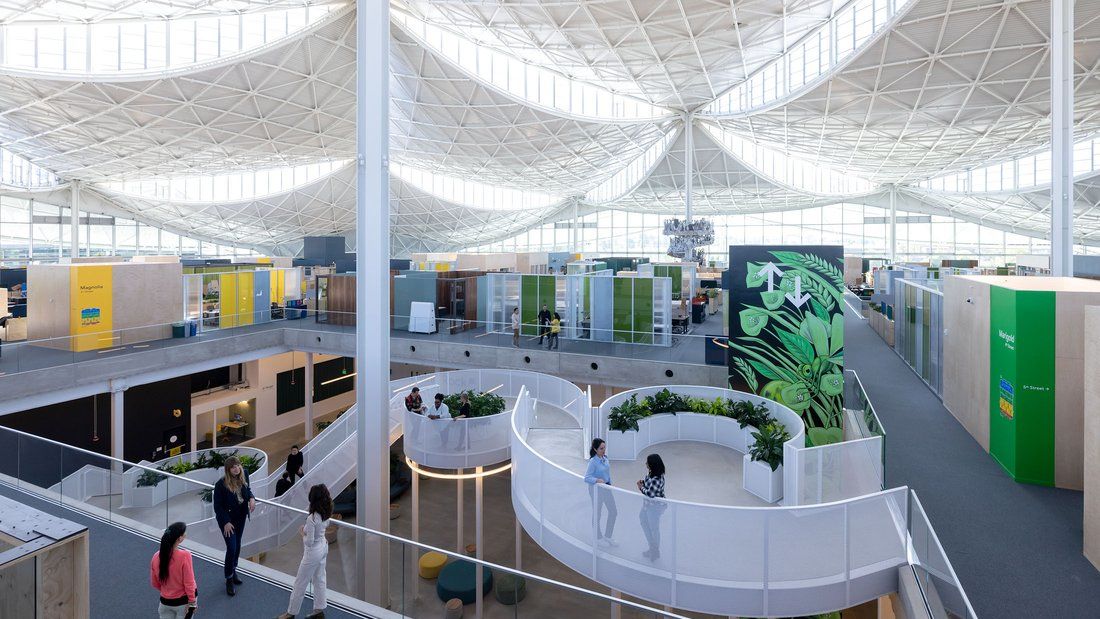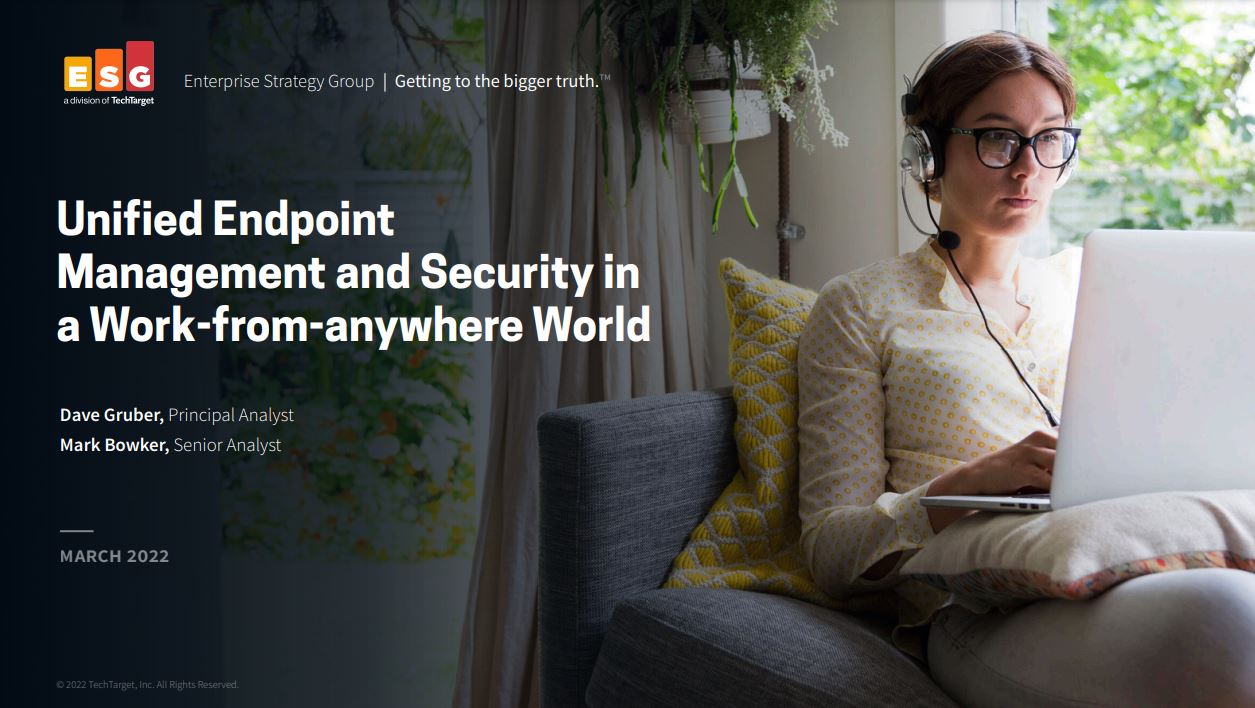Here’s the first look at Google’s new Bay View campus
First announced in 2017, the all-electric campus is the first to be fully developed and built by Google


Google has officially opened its long-awaited Bay View campus that aims to entice workers back into the office.
First announced in 2017, the Bay View campus is the first to be fully developed and built by the tech giant. The all-electric building is located only a seven-minute drive from Google’s main headquarters at 1600 Amphitheatre Parkway and is capable of seating 4350 employees.
Google launches Pixel 6a and new mobile wallet at I/O developer event Google purchases new London office for £730 million Four strategies for building a hybrid workplace that works
Divided into two levels, the ground floor combines meeting rooms and cafés that aim to provide opportunities for workers to make real-life connections and foster collaboration. The upper level, however, is divided into noise-buffered cubicles that enable team members to focus on their tasks – as well as connect with remote-based coworkers using video conferencing equipment.

Google’s director of R+D for the Built Environment, Michelle Kaufmann, described the upper level as “more quiet”, allowing Googlers to “focus on that immediate team”.
The design of the Bay Area campus has been based on Google’s commitment to “operate every hour of every day on carbon-free energy by 2030”. The building is powered by nearby wind farms and sources solar power through its innovative dragonscale rooftop panels, which are separated by large overhead windows, allowing for natural daylight and reduced electricity consumption. It also gathers rainwater using above-ground ponds, which serve as water sources for cooling towers, flushing toilets, as well as irrigating the landscape as part of the tech giant’s commitment to replenishing 120% of the water it consumes by 2030.

Commenting on the newly-unveiled Bay Area campus, Google’s Real Estate & Workplace Services VP David Radcliffe said that, “with a distributed workforce, an office needs to create harmony between those who are in the office and those who are elsewhere”.
“The flexible nature of the focus and collaboration spaces at Bay View is just one way to accommodate these changes. I truly believe these buildings will keep up as we introduce new spaces to improve hybrid work,” he added.
Get the ITPro daily newsletter
Sign up today and you will receive a free copy of our Future Focus 2025 report - the leading guidance on AI, cybersecurity and other IT challenges as per 700+ senior executives
Google employees were required to return to their designated offices in April, with most required to attend at least three days per week as part of the company-wide hybrid work policy. However, with many reluctant to leave their home working spaces behind, the tech giant has opted to lure its US workers back to the office with a free e-scooter, while also planning further large-scale campus investments.
Having only graduated from City University in 2019, Sabina has already demonstrated her abilities as a keen writer and effective journalist. Currently a content writer for Drapers, Sabina spent a number of years writing for ITPro, specialising in networking and telecommunications, as well as charting the efforts of technology companies to improve their inclusion and diversity strategies, a topic close to her heart.
Sabina has also held a number of editorial roles at Harper's Bazaar, Cube Collective, and HighClouds.
-
 Third time lucky? Microsoft finally begins roll-out of controversial Recall feature
Third time lucky? Microsoft finally begins roll-out of controversial Recall featureNews The Windows Recall feature has been plagued by setbacks and backlash from security professionals
By Emma Woollacott Published
-
 The UK government wants quantum technology out of the lab and in the hands of enterprises
The UK government wants quantum technology out of the lab and in the hands of enterprisesNews The UK government has unveiled plans to invest £121 million in quantum computing projects in an effort to drive real-world applications and adoption rates.
By Emma Woollacott Published
-
 IT professionals aren’t budging on flexible work demands – and more than half say they’ll quit if employers don’t meet expectations
IT professionals aren’t budging on flexible work demands – and more than half say they’ll quit if employers don’t meet expectationsNews Analysis from Randstad shows 40% of UK-based IT pros have quit over a lack of flexible work options, while 31% of workers globally have done the same.
By Ross Kelly Published
-
 'Digital hide-and-seek': Workers are wasting hundreds of hours a year sourcing the information they need to carry out their role
'Digital hide-and-seek': Workers are wasting hundreds of hours a year sourcing the information they need to carry out their roleNews Knowledge workers globally are wasting a quarter of their working week tracking down information, new research from Atlassian has revealed.
By George Fitzmaurice Published
-
 'The tide seems to be turning towards office attendance': 64% of hybrid business leaders want staff back in the office – but many worry that enforcing RTO mandates will drive employees away
'The tide seems to be turning towards office attendance': 64% of hybrid business leaders want staff back in the office – but many worry that enforcing RTO mandates will drive employees awayAnalysis Many UK business leaders want their staff back in the office more frequently, but they’re scared to implement return to office (RTO) mandates in fear of worker revolts.
By George Fitzmaurice Published
-
 Employees are dead set on flexible working arrangements – three quarters would turn down a role that didn't offer hybrid options as work-life balance becomes more important than pay
Employees are dead set on flexible working arrangements – three quarters would turn down a role that didn't offer hybrid options as work-life balance becomes more important than payNews New research shows workers are increasingly demanding flexible working arrangements from employers.
By Emma Woollacott Published
-
 Nearly half of tech workers are seeking new roles – declining employee benefits and reduced flexible working options have staff looking elsewhere
Nearly half of tech workers are seeking new roles – declining employee benefits and reduced flexible working options have staff looking elsewhereNews While salaries are rising for tech workers, other benefits are in decline, leading to a fall in job satisfaction
By Emma Woollacott Published
-
 Untethered: How CIOs and CISOs are paving the way for the new hybrid workforce
Untethered: How CIOs and CISOs are paving the way for the new hybrid workforceWhitepaper Effective techniques to transition from exposed legacy infrastructure to an effective zero trust strategy
By ITPro Published
-
 Unified endpoint management and security in a work-from-anywhere world
Unified endpoint management and security in a work-from-anywhere worldWhitepaper Learn how to converge endpoint management and security processes and systems to drive efficiency and reduce risk
By ITPro Last updated
-
 Unlocking the power of your digital services
Unlocking the power of your digital servicesSponsored Businesses have invested significant cash into technology since COVID-19, but are they really getting their money's worth?
By ITPro Published